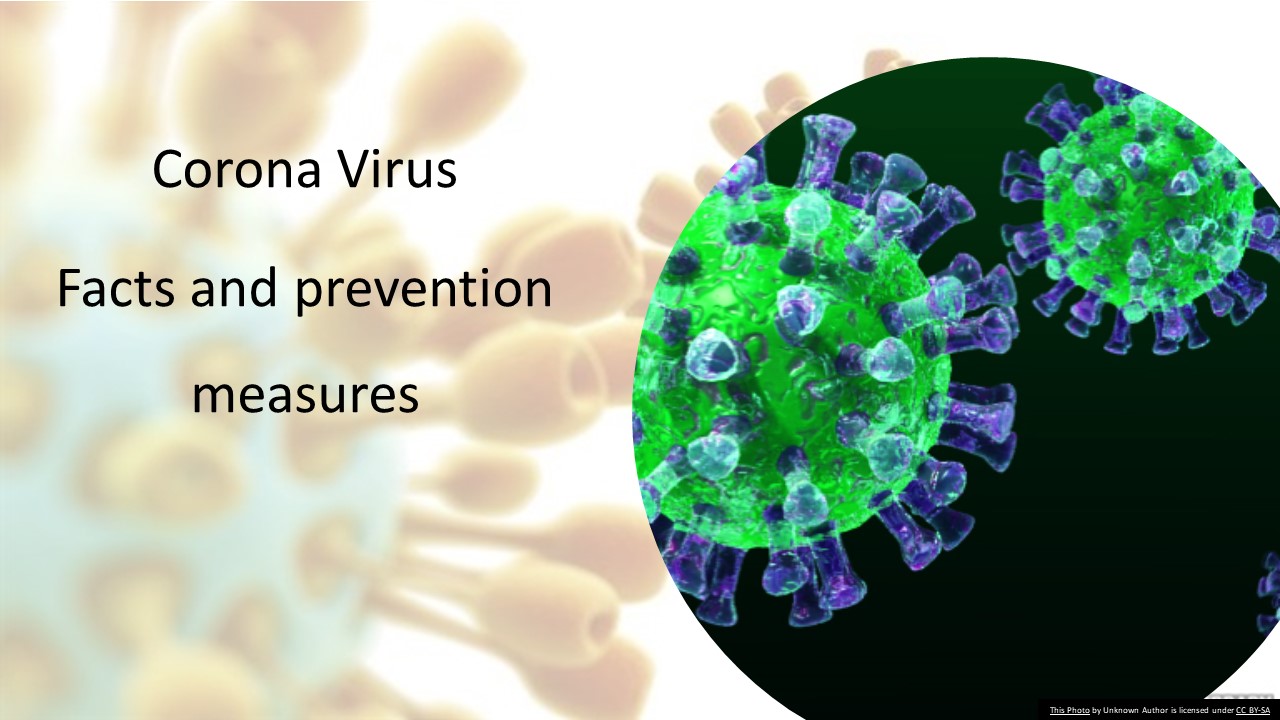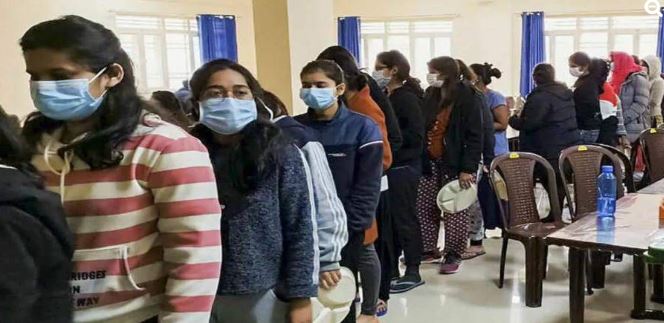Coronaviruses (CoV) are zoonotic, meaning they are transmitted between animals and people.
CoVs were the cause of:
Middle East Respiratory Syndrome (MERS-CoV) transmitted from civet cats to human.
Severe Acute Respiratory Syndrome (SARS-CoV) transmitted from dromedary camels to humans.
The coronavirus reported from Wuhan in China is a new strand of CoV named nCoV.
A novel coronavirus (nCoV) is a new strain that has not been previously identified in humans
It’s being reported to be getting spread to other parts of the world ‘only’ through people travelling from China. So, one need not panic if having simple cold and other similar symptoms. However, be sure to get it checked with a doctor. And take adequate preventive measures so that you don’t spread it – even if it’s not CoV.
Coronavirus Symptoms:
- Cold
- Sneezing
- Fever
- Cough
- Shortness of breath
- Breathing difficulties
In severe cases:
- Pneumonia
- Severe acute respiratory syndrome
- Kidney failure
- And even death
Route of human-to-human transmission of 2019-CoV is either via respiratory droplets or contact.
Any person who is within 1 meter/ 6 feet of the person who has CoV is at risk of being exposed to potentially infective respiratory droplets.
To prevent infection:
- Wash hands regularly with alcohol-based liquids or soaps.
- Cover your mouth and nose when coughing and sneezing.
- Cook your foods especially meat and eggs thoroughly.
- Avoid close contact with people showing symptoms of respiratory illness such as coughing and sneezing.
- Wipe places (table-tops, etc.) and utensils – that you suspect to have contact with infection – with saline water. *
- Gargle with saline water if you suspect a possible contact with affected people.
- Wear medical mask if going to hospitals or other places that may have corona infected people.
*Saline water may not kill this nCoV. However, saline is shown to be effective against many strands of viruses. Therefore, until a cure is developed, gargling saline water would not do any harm. If anything, it would only do good to you. Especially, if the suspected infection is not from nCoV, but from other viral or bacterial strains.
Individuals with suspected CoV infection with mild respiratory symptoms should:
- Perform hand hygiene frequently, using alcohol-based hand rub or soap and water.
- Do saline gargle at least three times a day.
- Do saline steam inhalation – for clearing nose.
- Keep distance from non-infected individuals as much as possible (at least 1 meter)
- Wear a medical mask as much as possible, if it can be tolerated.
- Wipe the touching places and utensils with alcohol based anti-infectants or saltwater.
- Any individual who cannot tolerate a medical mask, he or she should rigorously apply respiratory hygiene, that is, should cover mouth and nose when coughing or sneezing with disposable paper tissue. Dispose of the material after use.
- Clean hands immediately after contact with respiratory secretions.
- Improve airflow in living space by opening windows and door as much as possible.
Relatives or caregivers to individuals with suspected CoV infection with mild respiratory symptoms should:
- Perform hand hygiene frequently, using alcohol-based hand rub or soap and water.
- If possible, wear hand glove.
- Do saline gargle – to be on the safe side.
- Do saline steam inhalation – again to be on the safe side.
- Keep distance from affected individual as much as possible (at least 1 meter).
- Wear a medical mask when in the same room with the affected individual. Dispose of the material immediately after use.
- Clean hands immediately after contact with respiratory secretions.
- Wipe the places and utensils the patient is touching with alcohol based anti-infectants or saltwater.
- Improve airflow in living space by opening windows as much as possible.
- Avoid touching your nose and mouth maximum possible.
If you don’t have adequate disposing facilities at home, just immerse / rinse / wipe the affected stuff in / with saline / saltwater.
How to prepare saline water for gargling?
- Boil water.
- Add a spoon full of salt, preferably sea salt (1 spoon for 1 cup of water that is about 250 ml water).
- Allow to cool to usable warmth. Then gargle.
How to prepare saline water for inhalation?
- Boil water.
- Add a spoon full of salt, preferably sea salt (1 spoon for 1 cup of water that is about 250 ml water).
- Inhale (Make sure you keep your eyes closed). This is for people who wants to clear their nose.
If you want to know and read more about CoV click here.
Answers to some ongoing myths about CoV
CoV cannot infect you if you drink alcohol.
Wrong. Until now, no cure has been developed for nCoV. However, the saying that alcohol can kill viruses and especially bacteria is partly true. This is true if 70% alcohol (preferably 70% ethyl alcohol and 30% water) is used (but still may not be good enough against nCoV). A higher or lower concentration of alcohol than this may not be as much effective in killing microbes as 70% mix.
You need to wear a mask until the virus has been eradicated.
Wrong. You only need to wear a mask if you are going near a CoV infected person or may be into a crowd that you suppose may have infected people. Indeed, the infected people are the ones who should be wearing the mask and gloves, to stop spreading the virus. However, even the masks may not provide a 100% protection.
More than wearing a mask, it is recommended to perform frequent hand hygiene to avoid possible nCoV contamination. In that sense, wearing a glove might also help. This is because the more probable scenario for viral contamination may be from doors and other common places through hands and eventually to the lungs of a healthy person. Therefore, it would be a good idea to frequently disinfect hands and avoid touching nose and mouth unnecessarily. If using a mask, wash your hands before wearing the mask and after it has been taken off.
Info courtesy: WHO, Centre for Health Protection, Hongkong, Centers for Disease Control & Prevention


